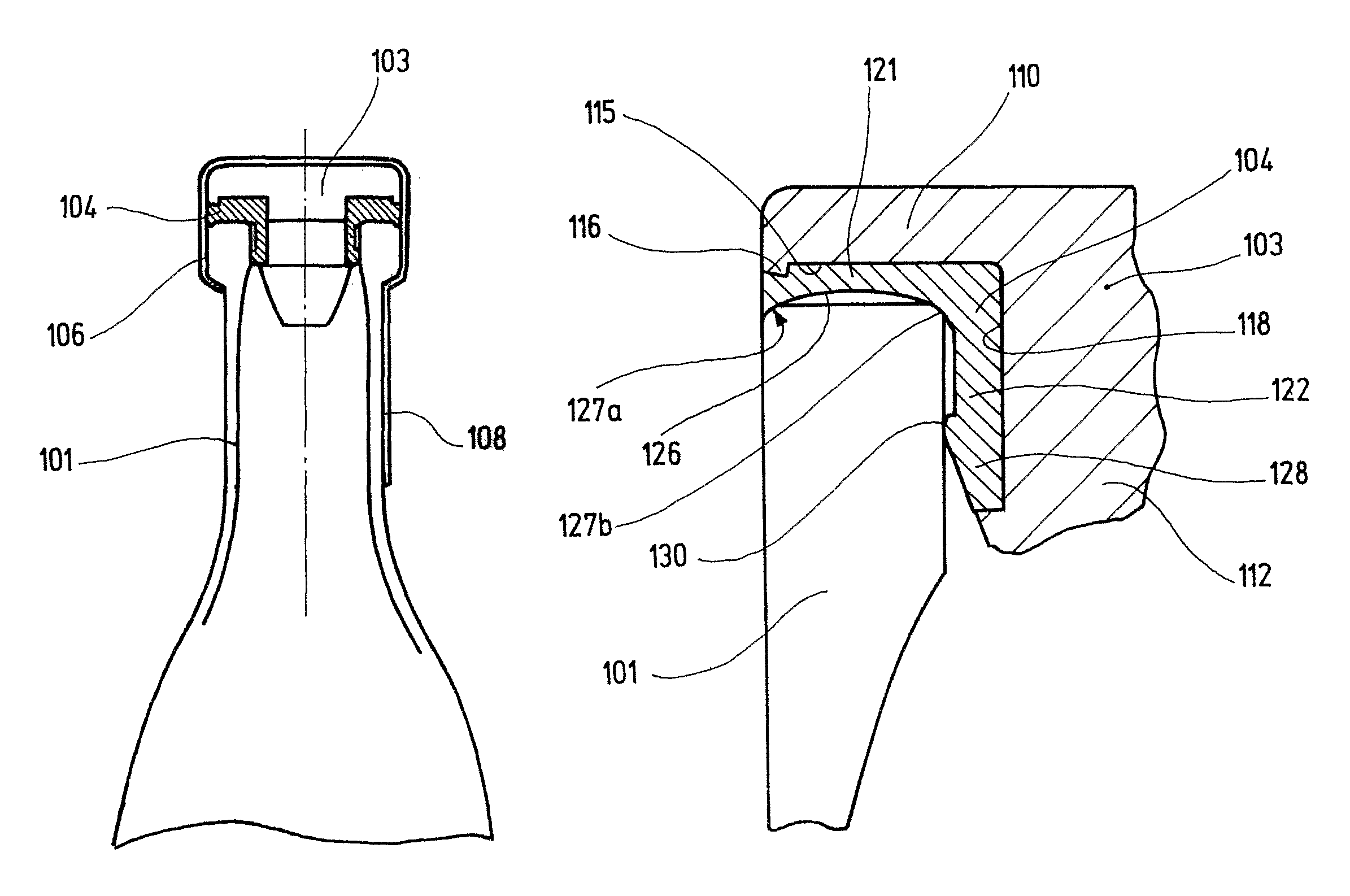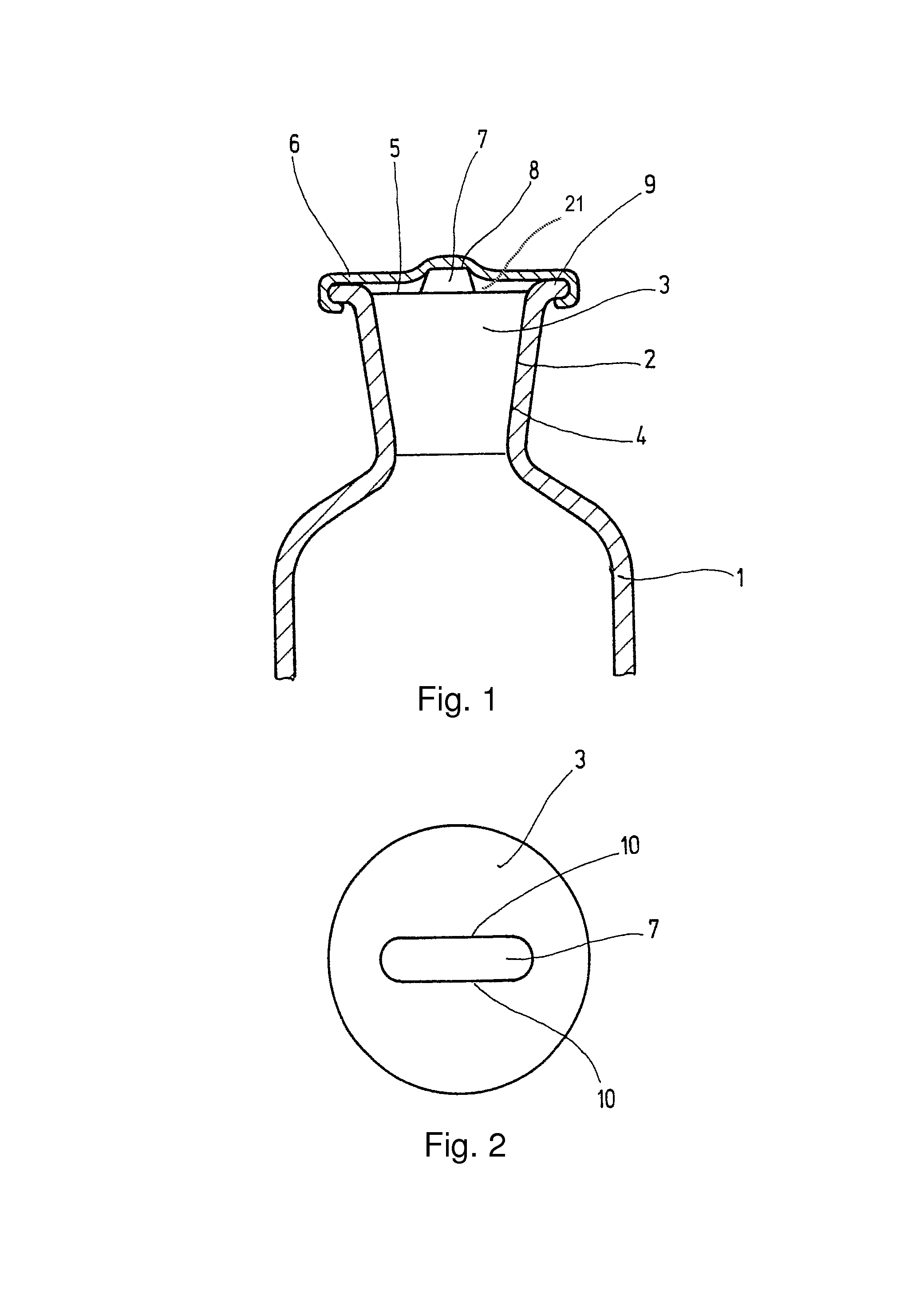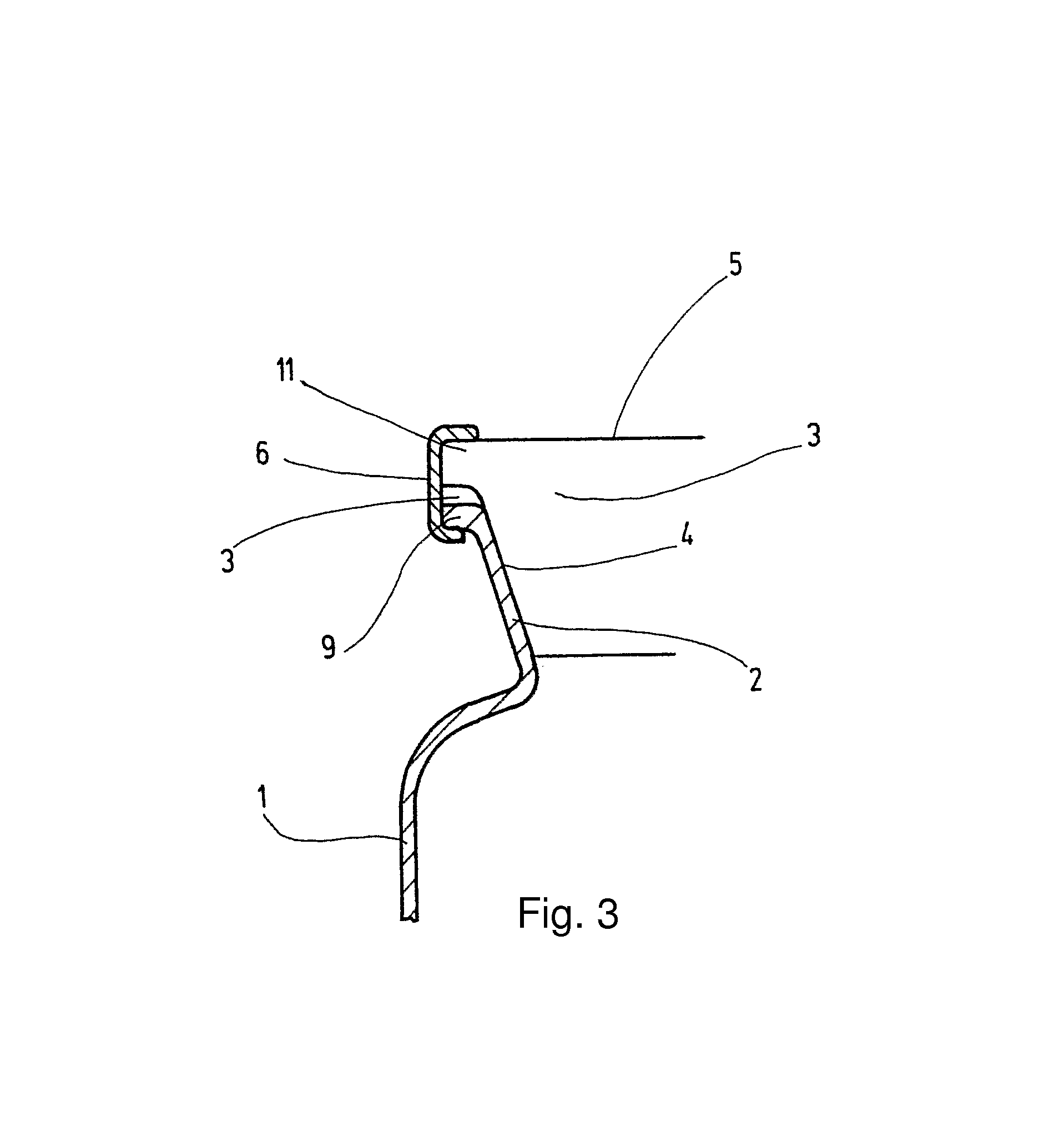Container, particularly a beverage bottle
a beverage bottle and container technology, applied in the field of containers, can solve the problems of wine producers, in particular, to considerable financial losses, and the use of plastics that can release vapors that can end up in wine, and achieve the effect of reliable sealing of the bottle opening
- Summary
- Abstract
- Description
- Claims
- Application Information
AI Technical Summary
Benefits of technology
Problems solved by technology
Method used
Image
Examples
first embodiment
[0063]FIG. 1 shows a cross-section of the invention with a bottle body 1 of essentially common shape and having at its upper end a bottle opening 2. Bottle body 1 is preferably made of glass. A bottle body made of a plastic material or of stoneware can conceivably also be used. In a particularly advantageous case, the bottle body is the body of a wine bottle, but it can also be a bottle for any other alcoholic beverage or for oil or vinegar.
[0064]In bottle opening 2 is inserted a closure 3 made entirely of glass. Said closure has a conical, ground outer surface that cooperates via a sealing surface 4 with a correspondingly shaped, also conical, ground inner surface of bottle opening 2. Such a sealing principle is already known from wine carafes with ground-glass stoppers. At a low cost, it is possible to configure, and particularly to grind, the conical surfaces of closure 3 and bottle opening 2 that cooperate at sealing surface 4 so accurately that complete liquid tightness and gas...
second embodiment
[0075]FIG. 3 shows the invention.
[0076]Here, closure 3 is not completely inserted into bottle opening 2 but with an edge 11 overlaps bottle opening 2. Fixing element 6 is ring-shaped and embraces top side 5 of the closure and bottle rim 9 so as to positively hold closure 3 in the axial direction.
[0077]In addition, as a result of friction between top side 5, edge 11, fixing element 6 and bottle rim 9, a frictional connection is created which holds closure 3 in radical direction thus preventing rotation in bottle opening 2. The prevention of rotation can be enhanced, for example, by providing edge 11 of closure 3 with recesses that are partly entered by fixing element 6 thus bringing about an additional positive fixation.
[0078]As an alternative to the described conical, ground sealing surface 4, it is also possible to provide a kind of locking or threaded connection between closure 3 and bottle opening 2. To this end, it would be necessary already during the original shaping of the gl...
third embodiment
[0084]Fixing element 6 holds closure 3 firmly in bottle opening 2. In the third embodiment shown in FIG. 4, closure 3 is held by fixing element in the form of a snap cap shown in FIG. 5 in partial cross-section and in bottom view. Such a snap cap has already found use as a means for protecting closures on infusion bottles.
[0085]The snap cap (fixing element 6) consists of a ring-shaped aluminum element which on its upper part is already preshaped, for example flanged, thus overlapping flange 12 of closure 3. It is slipped over closure 3 and bottle rim 9 and can then be deformed by means of an appropriate flanging tool so that it touches a back taper 15 formed between bottle rim 9 and bottle body 1. In this manner, closure 3 is held firmly in its position even when with seal 14 it is pressed against bottle rim 9 for the purpose of creating a suitable sealing force.
[0086]In the snap cap is provided a finger ring, not shown in the drawing, which is connected with the aluminum element, n...
PUM
 Login to View More
Login to View More Abstract
Description
Claims
Application Information
 Login to View More
Login to View More - R&D
- Intellectual Property
- Life Sciences
- Materials
- Tech Scout
- Unparalleled Data Quality
- Higher Quality Content
- 60% Fewer Hallucinations
Browse by: Latest US Patents, China's latest patents, Technical Efficacy Thesaurus, Application Domain, Technology Topic, Popular Technical Reports.
© 2025 PatSnap. All rights reserved.Legal|Privacy policy|Modern Slavery Act Transparency Statement|Sitemap|About US| Contact US: help@patsnap.com



